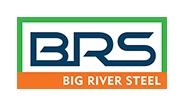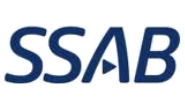Steel Mills

SMU Interview with Big River Steel
Written by John Packard
July 15, 2014
Big River Steel will break ground on the new 1.6 million ton flat rolled mill some time later this month, according to their Chief Commercial Officer, Mark Bula.
Construction of the new flat rolled electric arc furnace mini-mill was delayed for about a year as Big River Steel (BRS) had to wait until all air quality challenges launched by another steel mill located close to the BRS construction site were addressed and dismissed. The challenges to the mill were recently exhausted, the financing is in place and work will soon begin on the newest steel mill in the United States.
On Monday of this week Steel Market Update spoke with Mark Bula, Chief Commercial Officer for the soon to be built Big River Steel. We discussed the strengths and aspirations of the mill and the marketing team he will soon lead as the $1.3 billion mini-mill is being constructed in Osceola, Arkansas.
We started with why the ownership decided to build the mill in Arkansas as opposed to another location. Mr. Bula told us that there were three reasons for selecting the Arkansas location:
 1) Energy – the company needed reasonably priced energy and they believe that they have one of the best industrial electricity rates in the country.
1) Energy – the company needed reasonably priced energy and they believe that they have one of the best industrial electricity rates in the country.
2) Market – they needed to be in proximity of markets they can develop and sell their products.
3) Transportation – they needed to look at their costs for both inbound and outbound freight. Being able to ship by barge as well as rail through the BNSF and by truck was crucial to the decision making process. The ability to barge steel gives them the option to service a wider area domestically and to ultimately be an exporter of electrical steels which, according to Mr. Bula, is very much an international market.
When John Correnti announced plans for the mill, he described the site as follows: “This site is steel mill heaven. On the east side of the property you‘ve got Big Muddy, the Mississippi River; on the west side of the property you have the BN railroad, a Class 1 railroad to take our product all over the country and bring our scrap metal in from all over the country,” said Correnti. “Adjacent you have energy with Reliability, with 500 kV lines sitting directly on the property and three miles west you have I-55. What I’m trying to point out—logistically it’s great.”
SMU was told the company is working on some final details with the expectation that the mill will break ground by no later than the end of July 2014.
SMU questioned Mr. Bula about what differentiates Big River Steel from the other mills located in close proximity to the Osceola locations. He responded by telling us that steel mills have to “innovate or die.” Big River Steel is a natural evolution of the steel industry. “We think we can get into new markets, the steel industry must continue to develop itself,” he said.
The mill will begin construction of the first phase of what could ultimately be a three phase process. The first phase will consist of an electric arc furnace (EAF), a caster, hot strip mill, pickle tandem cold mill and galvanizing line. However, there are two pieces of equipment being placed in the first phase which will allow Big River Steel to produce steels which previously were reserved for fully integrated mills.
The mill will have a longer than normal tunnel furnace with higher heat capabilities and, secondly, they will have a RH Degasser (Ruhrstahl-Heraeus) which will allow the mill to produce a wide range of Advanced High Strength Steels (AHSS) as well as a full range of API pipe grades.
The new mill will be able to run slabs off the caster as thin as 2” to over 3” in thickness. This allows the mill to have proper reductions to achieve certain grade and surface qualities.
The line will be able to produce hot rolled, hot rolled pickled and oiled (HRPO), cold rolled and galvanized products as well as electrical steels.
Big River Steel and their equipment supplier, SMS Siemag, have designed the caster and hot strip mill to be able to produce 1” thick by 76” wide hot bands. The reason for the 76” width is that provides them the opportunity to meet the requirements of the full range of an ERW (electric resistance welded) pipe mill.
The lightest hot rolled coil will be .054”.
The same mill will be able to produce cold rolled and galvanized from .097” (for grain bin and other agriculture applications) to as light as .012” (furnace pipe, corner bead and other construction products).
Mr. Bula told SMU that Big River Steel will not produce galvannealed or Galvalume. The coating line is not being focused on automotive or appliance exposed galvanized applications.
Mr. Bula told SMU, “Lightweighting and strengthening any product will be critical to the steel industry.” We spoke about customers outside of automotive who are looking for lighter, stronger steels to make their products. In the automotive world, Big River Steel is focused on producing Advanced High Strength Steels which are used in frames, supports and non-exposed applications.
Besides automotive, BRS is interested in two other markets where they feel their products will naturally fit well with the needs of their prospective customers. He mentioned the energy markets with oil country tubular goods (OCTG) and API grades of pipe. They also expect to be a force to consider in the coiled plate markets.
The investments they are making to produce AHSS and API grades match up well with electrical steels. At the conclusion of phase 1 they expect that they will be able to make some of the non-grain oriented semi-processed electrical steels. If, and when, they move to phase 2 they will consider expanding their electrical steels to include both grain oriented and non-grain oriented silicon grade steels.
When phase one is complete the mill is expected to be able to produce 1.6 million tons of flat rolled steels. Mr. Bula told SMU during the interview, “I realize it is going to take a lot of effort working with the technology and our customers. We are prepared that it will take time, it will be a slow evolution and we are not naïve to not understand how hard this is going to be.”
The initial markets being considered are: Service Centers, Pipe & Tube, Transportation, Construction and miscellaneous manufacturing.

John Packard
Read more from John PackardLatest in Steel Mills

Nucor lowers 2024 output estimate for Brandenburg plate mill
Nucor has lowered the 2024 production estimate for its Brandenburg, Ky., plate mill due to soft market conditions.

SSAB adjusts output in weak Q3, readies for Q4 rebound
SSAB said lower plate prices in the US were the primary reason for reduced results in the second quarter. With a dismal Q3 outlook, the Swedish steelmaker is adjusting production across its facilities. That includes moving up its annual US mill outage in anticipation of a better Q4. SSAB Americas Revenues in the Americas segment […]

Topalian puts focus on “unfair” trade, eyes USMCA partners
Nucor’s top executive expressed concerns over unfair trade practices, highlighting increased steel imports from Mexico and Canada.

Cliffs sees close of Stelco buy, bottom to steel tags, and Mexico out of USMCA
Cleveland-Cliffs expects its acquisition of Canada’s Stelco to close later this year, which will help the the Cleveland-based steelmaker as a bottom to steel tags nears.

Nucor posts lower Q2 earnings, predicts tough Q3 too
Nucor recording lower second quarter earnings on falling steel prices. And the Charlotte, N.C.-based predicted that profits would be lower still in the third quarter, primarily because of weaker results from its steel mills divisions.
